Irreplaceable dishes in a typical Vietnamese Tet meal
The Lunar New Year (Tet) festival is Vietnam's most important and celebrated occasion, and there are many irreplaceable dishes in the Vietnamese Tet meal.
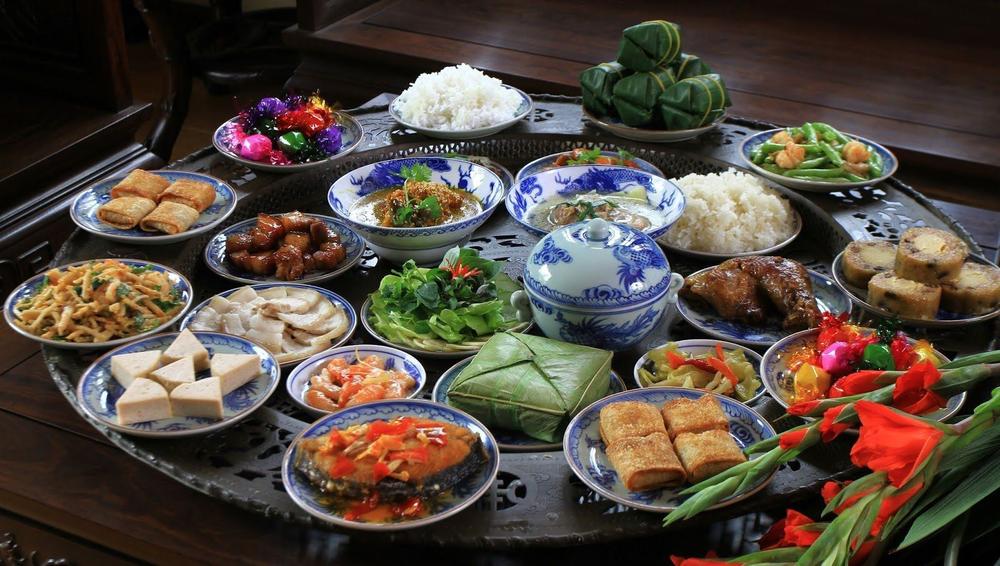
The upcoming Tet festival is a time for Vietnamese to express gratitude to their ancestors and for family members to gather, talk, and enjoy traditional Vietnamese food - the most enjoyable thing about Tet.
But a traditional Vietnamese meal may differ from region to region based on local specialties and climate. However, the following dishes remain irreplaceable at every Lunar New Year meal. Let's check eight typical foods found in the Vietnamese Tet holiday.
Bánh Chưng / Bánh Tét (Sticky rice cake)
When it comes to Tet, ask anyone in Vietnam what food comes to mind first, the answer is almost certainly bánh chưng or bánh tét. While both bánh is rice with fatty pork and bean fillings wrapped in green banana leaves or dong leaves, there is a clear distinction between them.
In general, bánh chưng is a well-known Tet dish in Northern Vietnam. Meanwhile, bánh tét is commonly associated with Southern Vietnam.

Aside from the regional difference, their shapes are also quite different. Bánh chưng is square because ancient Vietnamese people believed the sky is round, the earth is square. So bánh chưng represents the earth. Meanwhile, bánh tét is shaped like a tube.
In the traditional Vietnamese view, producing bánh chưng is an occasion for the Vietnamese family to reunite. Sitting around the fire, family members reminisce about the past year and exchange best wishes for the following year. Sometimes the process of making bánh chưng brings back more Tet memories and stories than the flavor itself.
Gà luộc (Boiled chicken)
Only second in importance to bánh chưng, boiled chicken is also an irreplaceable dish of the New Year's meal. Some believe this dish represents a prosperous new beginning for the family.
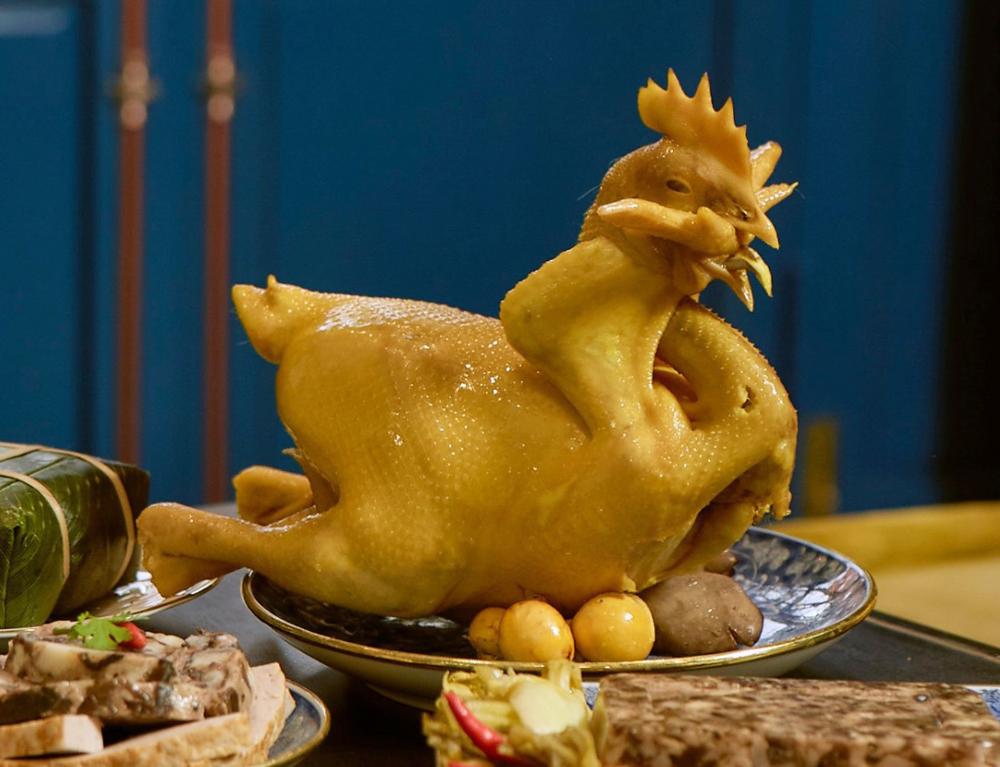
The chickens used in the dish are indigenous breeds. The whole chicken is cleaned and then boiled until the flesh is fully cooked in a large pot, and the skin becomes a brilliant yellow color. The chicken then allows the meat to dry and harden before chopping it into uniform-sized pieces. These chicken pieces should completely cover a round or oval dish.
Lime leaf is a unique ingredient in boiled chicken. They help add a special aroma to the dish. The leaves must be sliced into super-thin strands and then placed on the chicken.
Giò Lụa (Pork bologna)
Giò lụa is another traditional Tet menu item often served with starchy foods. The dish has two primary ingredients: pounded lean pork and delectable fish sauce wrapped in a banana leaf into a cylindrical shape and steamed.
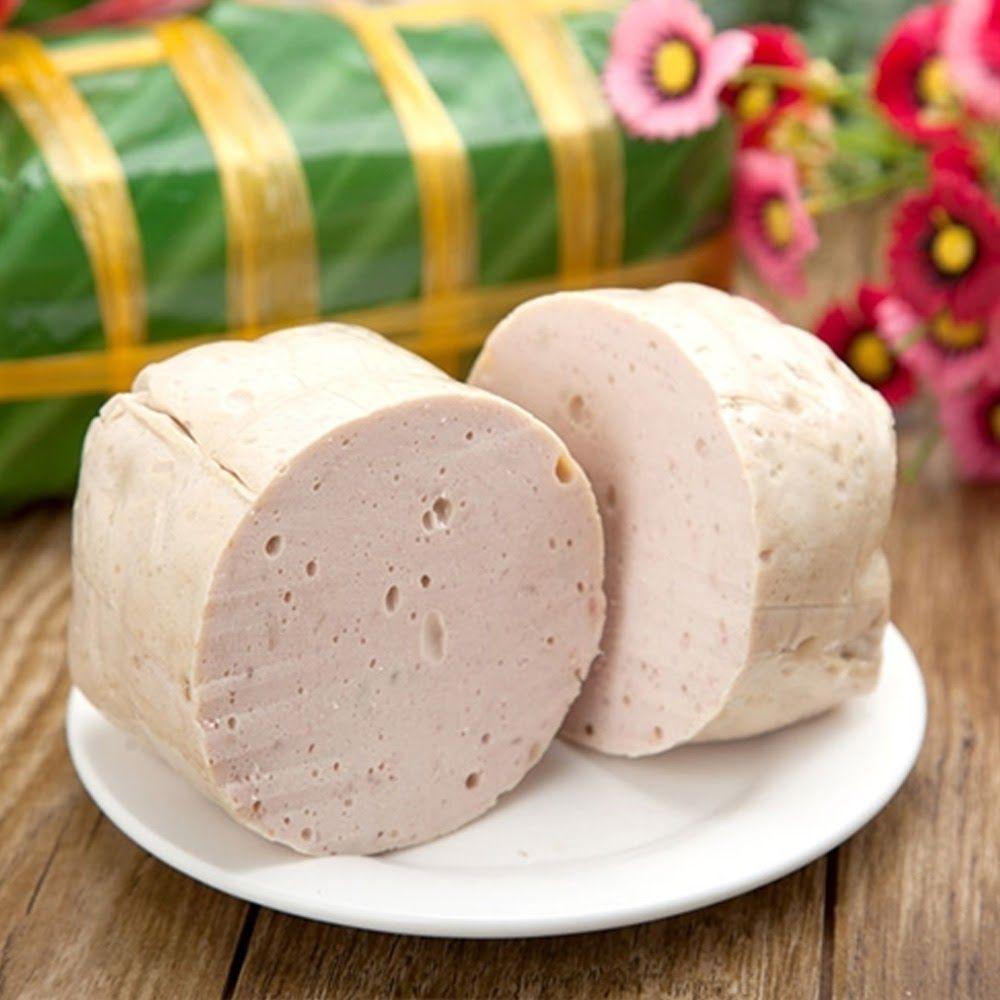
Before consumption, Vietnamese will unwrap it. Giò lụa is typically sliced horizontally and then cut into five or six pieces before sprinkling with fragrant pepper powder.
The dish will meet the finished product requirements if it is fresh, dense, and easy to slice. They are meticulously crafted to ensure a completely smooth surface. Giò lụa is not only served in Tet, but it is also used as a filling for bánh mì (Vietnamese sandwiches), sticky rice, or bánh chưng...
Besides giò lụa, there are two types of difficult giò are giò bò (made of purred beef) and giò thủ (made of pork meat, ear, nose, tongue, cheek, and wood ear mushrooms). They are present in the Tet meal of some families.
Canh Bóng (Vegetable soup with pork skin)
Every meal includes a shared bowl of soup in Vietnam, and Tet meals are no exception. Vietnamese frequently prepare a frugal and hot bowl of vegetable soup with pork skin during Tet. Broccoli, cauliflower, carrots, mushrooms, and peas are commonly included in the vegetable selection, along with young shrimp and meatballs.
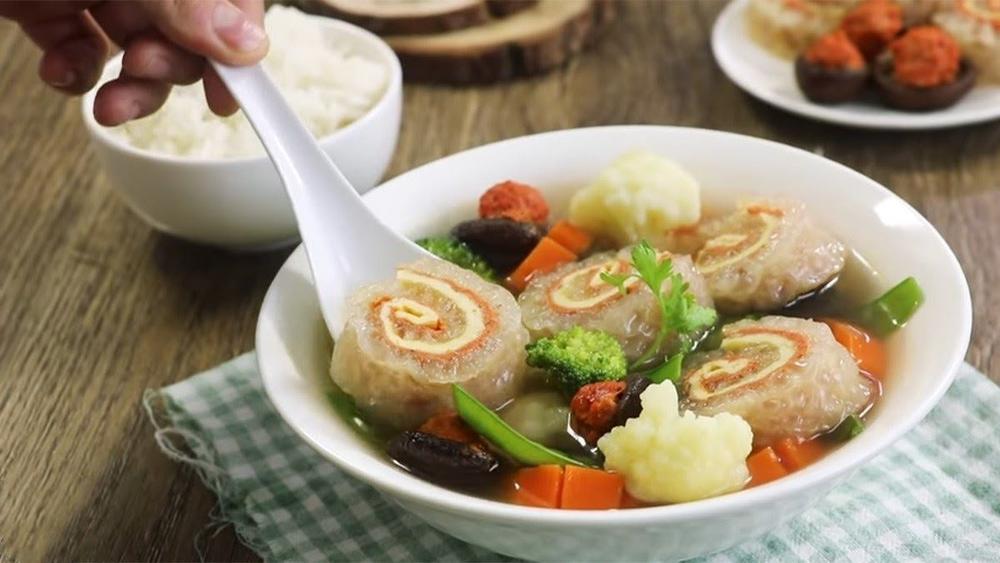
Besides, braised meat bones add a subtle sweetness to the broth. And the dish will not be complete without the pork skin. Though its flavor is light, the treacherous surface of the pork skin gives eaters joy when chewed.
Nem rán (Fried spring rolls)
Fried spring roll, one of Vietnam's most popular dishes, is indispensable in the New Year meal. It is a well-balanced blend of many ingredients.
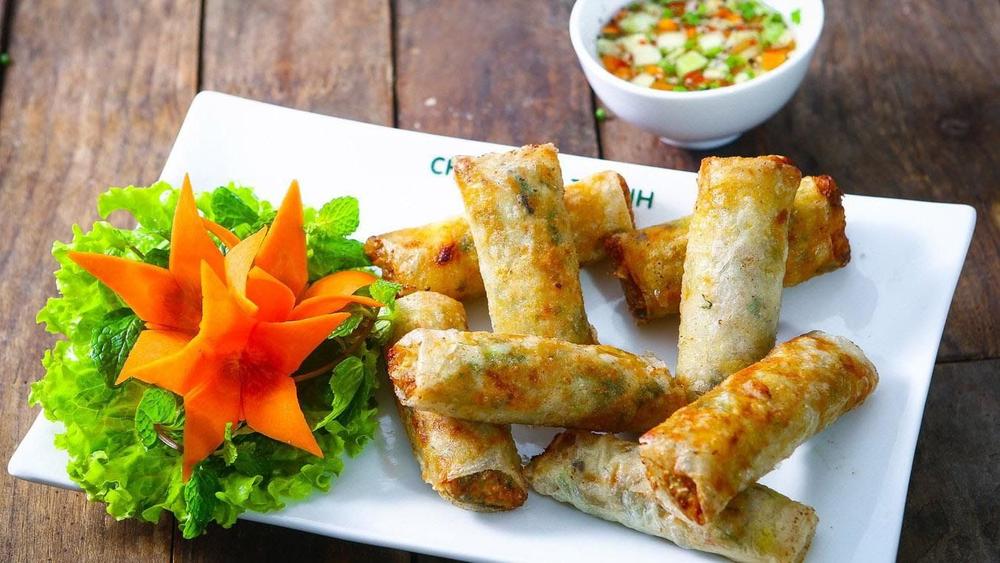
It includes fatty pork, onion, ear mushroom, vermicelli, egg, pepper, carrot, and bean sprouts. All ingredients are chopped and mixed with spices. The mixture is then stuffed and rolled in thin, white rice paper, with the cook ensuring that it is snugly ensconced inside. The last step is frying with oil.
To balance the greasy taste, the fried spring rolls are served with fish sauce mixed with lime juice, sugar, garlic, and chili, as well as fresh lettuce and spice greens. It is not an exaggeration to say that a well-made nem rán is a flavor explosion.
Củ Kiệu (Pickled scallion head)
The typical Vietnamese Tet meal is delicious dishes that are sophisticatedly processed and very rustic and simple. Củ Kiệu – pickled scallion head is one of those dishes. It is simple but essential.
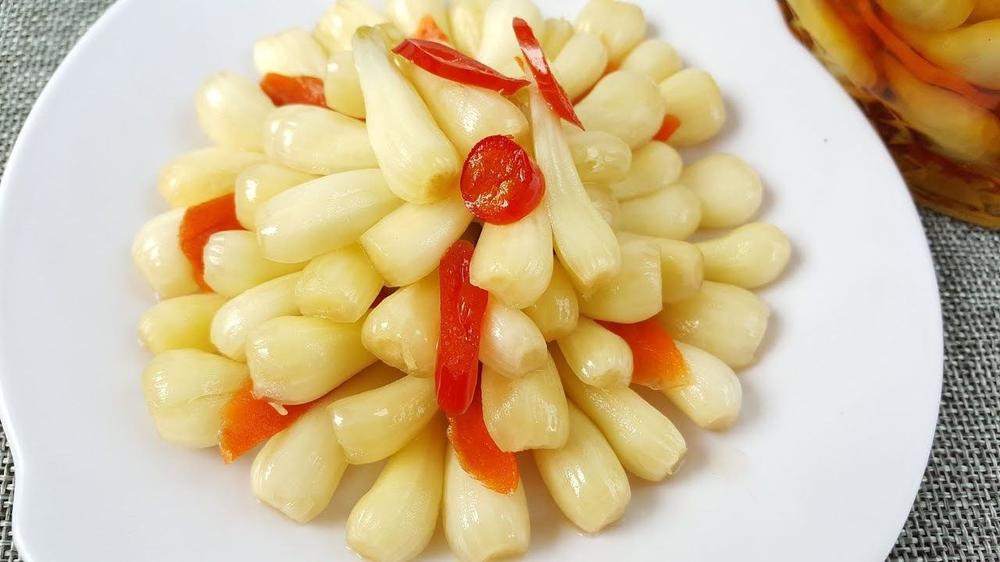
Củ Kiệu is always served in Tet meals to balance flavors between dishes. They're a low-calorie side dish that helps settle the stomach and increase appetite during the Tet.
Although not everyone in Vietnam can consume these pickled foods, they are still essential during Tet. The following well-known traditional Tet couplet shows this:
Thịt mỡ, dưa hành, câu đối đỏ
Cây nêu, tràng pháo, bánh chưng xanh
translated as below:
Fatty meat, pickled onions, cabbage, red couplets
Neu tree, firecracker, green bánh chưng.
Mứt (Jam and dried fruits)
Every Vietnamese family will have a box full of dried candied fruits and candies during the Tet holiday. Some popular ones are Mứt dừa (coconut), Mứt bí (dry butternut squash), Mứt me (tamarind), Mứt gừng (ginger). During Tet, it is the most popular among Vietnamese children.
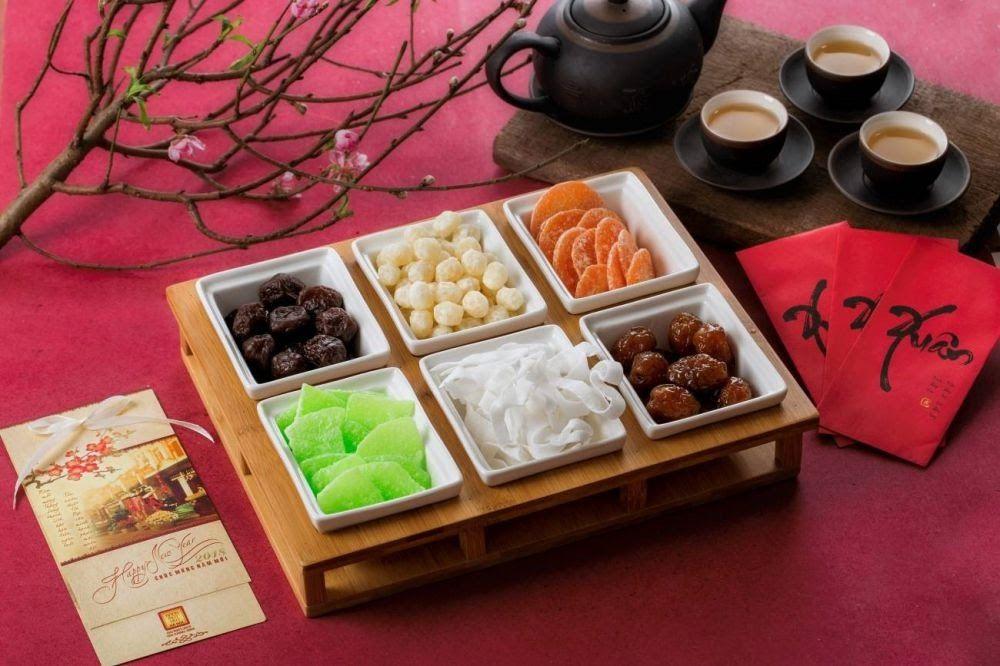
The candied fruits platter is frequently purchased in a set, selected one at a time, or even made in-house. Mứt is always kept in lovely boxes and placed on the living room table. And it's the main course for the owners and guests to enjoy while conversing over a cup of tea.
In contrast to Western jam, which is typically served in liquid form with bread, "Vietnamese jam" is mostly dry, comprising dried fruits such as ginger, carrot, coconut, pumpkin, pineapple, lotus seed, star fruit, sweet potato,...
This once-a-year snack mix has a wide range of flavors and is available only once a year. Besides being used to welcome guests, they are also popular Tet gift baskets with many components.
Nowadays, cake and sweets are gradually replacing jam during the Tet holiday, but many people still enjoy the flavor of this one-of-a-kind food – an aspect of Vietnamese culture.
Hạt dưa (Melon seeds)
Because of its beautiful red color, hạt dưa is considered a lucky symbol during the Lunar New Year. They're also great with a cup of tea!
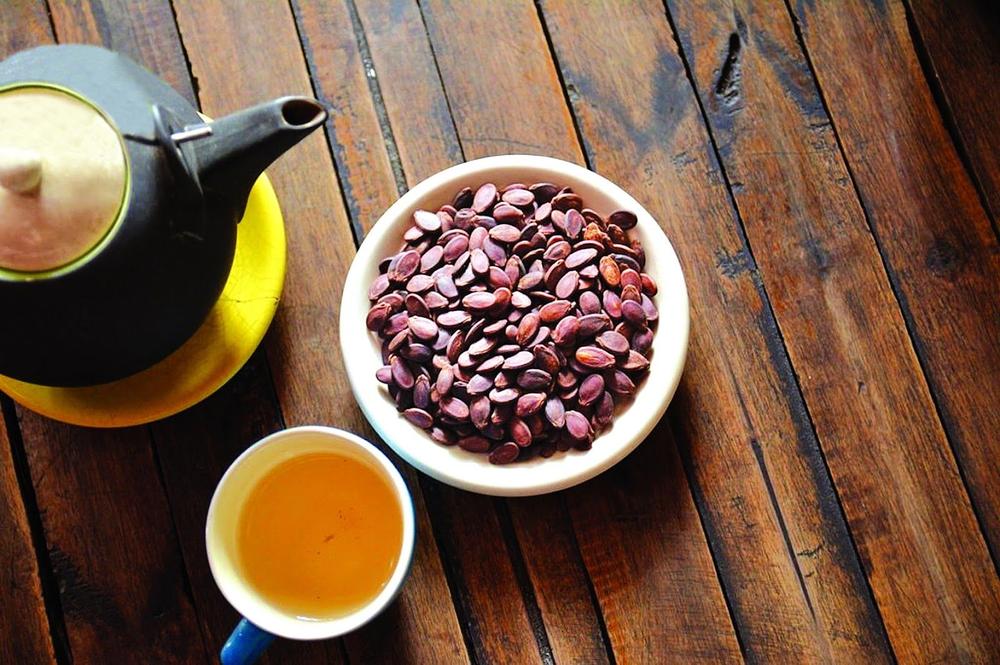
Use your front teeth to peel the seeds and dig out the tasty center to eat them. It takes some effort. But you're with family and friends, so there's no need to rush.
Besides hạt dưa, Vietnamese people also consume other seeds such as pumpkin seeds, sunflower seeds, watermelon seeds,...
The top 8 traditional Vietnamese Tet dishes listed above are worth tasting to get a sense of how the locals celebrate their Lunar New Year. So, if you arrive in Vietnam during the special occasion when the entire country joins in the Tet vibe, savor the traditional Vietnamese food for Tet that you come across along the way.
